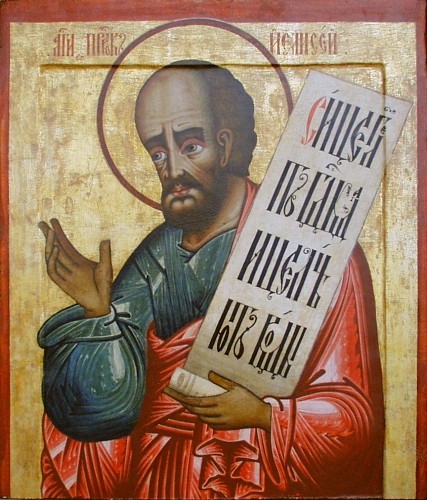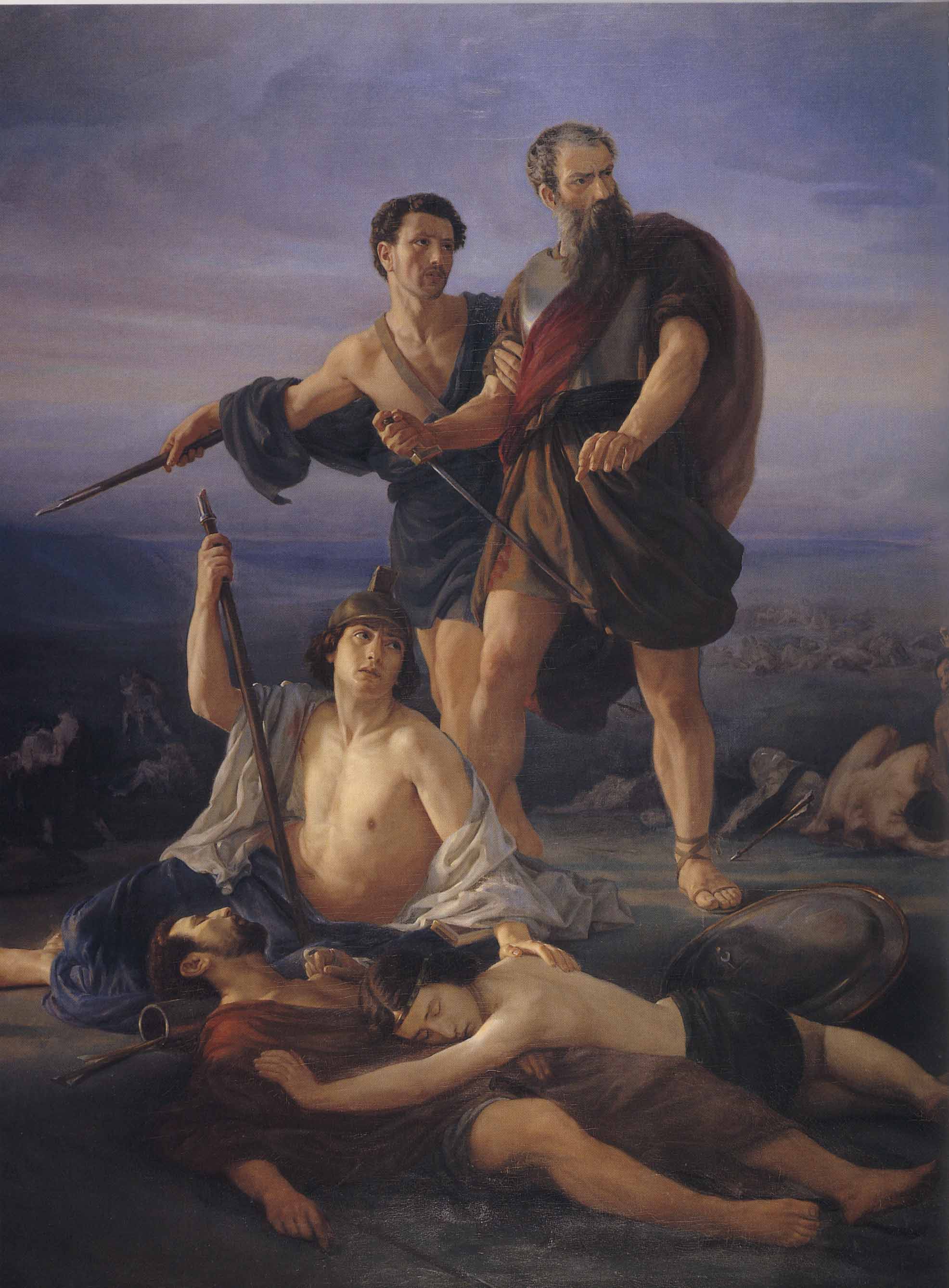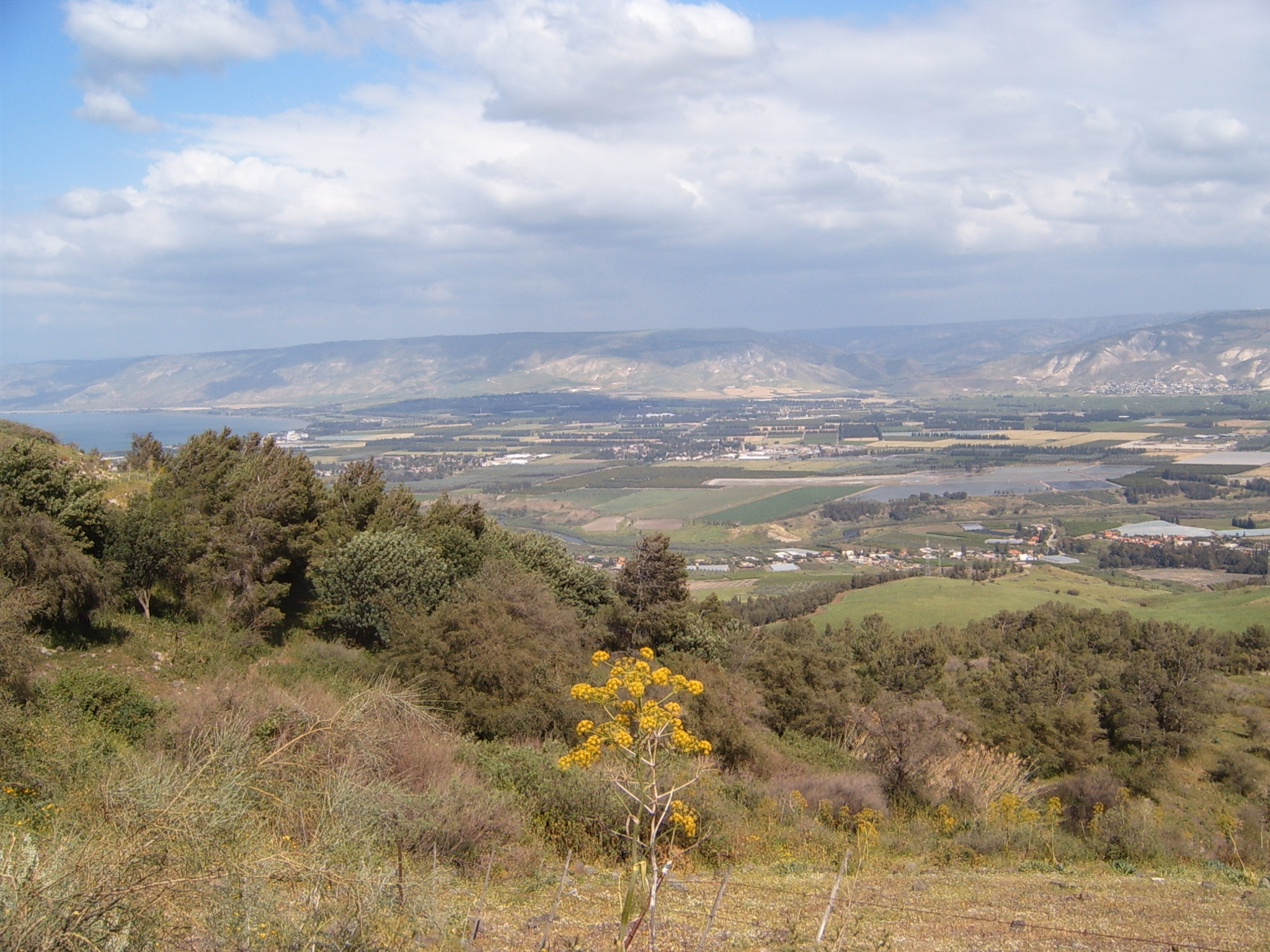|
Abel-meholah
Abel-meholah ( he, אָבֵל מְחוֹלָה, ''Avel Mehola'') was an ancient city frequently mentioned in the Hebrew Bible (Old Testament of Christianity). It is best known for being the birthplace and residence of the prophet Elisha. It is traditionally located near the Jordan River, south of Beit-She'an. Mentions in the Bible When Gideon defeated the Midianites, some of them fled "as far as the border of Abel-meholah" (). The text indicates that Abel-meholah was seen as a region with a defined border, west of the Jordan River and south of Beit-She'an. Abel-meholah is mentioned the Book of Kings under the description of King Solomon's administration. Among Solomon's twelve governors, there is one Baana who is put in charge of several districts including the area "from Beth-She'an to Abel-meholah" (). Later in the Book of Kings, Elijah, who had fled fearing Queen Jezebel's wrath, is ordered by God at Mount Horeb to go back along the Jordan valley and "anoint Elisha son of Sh ... [...More Info...] [...Related Items...] OR: [Wikipedia] [Google] [Baidu] |
Mehola
Mehola ( he, מְחוֹלָה) is a religious moshav and Israeli settlement in the West Bank. Located in the Jordan Valley near the Green Line and the Palestinian village of Bardala,Isabel KershneStrategic Corridor in West Bank Remains a Stumbling Block in Mideast Talks,' New York Times, 4 January 2014. it falls under the jurisdiction of Bik'at HaYarden Regional Council. With an area of 5,000 dunams, in it had a population of . The international community considers Israeli settlements in the West Bank illegal under international law, but the Israeli and US governments dispute this. History The village was established in 1967 by Bnei Akiva members. It was named after the biblical city of Abel-meholah (, , ), which was located in the area. The inhabitants of Mehola cultivate some of the village lands of the depopulated Palestinian village of Al-Fatur. In 1993, it was the site of Mehola Junction bombing. In June 2012, the outpost Givat Sal'it ( he, גבעת סלעית) ... [...More Info...] [...Related Items...] OR: [Wikipedia] [Google] [Baidu] |
Shaphat
Shaphat ( he, שָׁפָט; Latin and Douay–Rheims: Saphat) of Abel-meholah: a man in the Bible, father of Elisha Elisha ( ; or "God is my salvation", Greek: , ''Elis îos'' or , ''Elisaié,'' Latin: ''Eliseus'') was, according to the Hebrew Bible, a prophet and a wonder-worker. His name is commonly transliterated into English as Elisha via Hebrew, Eli .... {{Tanakh-stub Books of Kings people ... [...More Info...] [...Related Items...] OR: [Wikipedia] [Google] [Baidu] |
Tell Abu Al-Kharaz
Tell Abu al-Kharaz () is an archeological tell in the Irbid Governorate of modern-day Jordan. Tell Abu al-Kharaz was the site of a fortified town during the Bronze and Iron Ages; it is located in the Jordan Valley, 4 kilometers east of the Jordan River. Location Tell Abu al-Kharaz is situated on a strategic point, approximately one kilometer north to where the perennial stream of Wadi al-Yabis enters the Jordan Valley. It lies in a region known in biblical times as Gilead. The site is located 35 km from the Sea of Galilee, and 80 km from the Mediterranean Sea; it is 4 km east of the Jordan River, and 6 km south-southwest of Pella. It was at the crossroads of ancient trade routes that linked Megiddo and Beit Shean to the Mediterranean. The tell is about 60 meters high (116 meters below sea level) and covers an area of 300 x 400 meters. It was excavated between 1989 and 2001 by the Swedish Jordan Expedition under the direction of Peter M. Fischer. Chronology ... [...More Info...] [...Related Items...] OR: [Wikipedia] [Google] [Baidu] |
Shadmot Mehola
Shadmot Mehola ( he, שַׁדְמוֹת מְחוֹלָה, , Mehola Fields) is an Israeli settlement in the West Bank, organized as a national-religious moshav shitufi.Shadmot Mehola Bik'at HaYarden Regional Council Located in the , it falls under the jurisdiction of . In it had a population of . The international community considers Israeli settlements in the West Bank [...More Info...] [...Related Items...] OR: [Wikipedia] [Google] [Baidu] |
Elisha
Elisha ( ; or "God is my salvation", Greek: , ''Elis îos'' or , ''Elisaié,'' Latin: ''Eliseus'') was, according to the Hebrew Bible, a prophet and a wonder-worker. His name is commonly transliterated into English as Elisha via Hebrew, Eliseus via Greek and Latin, or Alyasa via Arabic, and Elyasa or Elyesa via Turkish. Also mentioned in the New Testament and the Quran, Elisha is venerated as a prophet in Judaism, Christianity and Islam and writings of the Baháʼí Faith refer to him by name. Before he settled in Samaria, Elisha passed some time on Mount Carmel. He served from 892 until 832 BC as an advisor to the third through the eighth kings of Judah, holding the office of "prophet in Israel". He is called a patriot because of his help to soldiers and kings. In the biblical narrative, he is a disciple and protégé of Elijah, and after Elijah was taken up in a whirlwind, Elisha received a double portion of his power and he was accepted as the leader of the sons of t ... [...More Info...] [...Related Items...] OR: [Wikipedia] [Google] [Baidu] |
King Saul
Saul (; he, , ; , ; ) was, according to the Hebrew Bible, the first monarch of the United Kingdom of Israel. His reign, traditionally placed in the late 11th century BCE, supposedly marked the transition of Israel and Judah from a scattered tribal society to organized statehood. The historicity of Saul and the United Kingdom of Israel is not universally accepted, as what is known of both comes from the Hebrew Bible. According to the text, he was anointed as king of the Israelites by Samuel, and reigned from Gibeah. Saul is said to have died by suicide when he "fell on his sword" during a battle with the Philistines at Mount Gilboa, in which three of his sons were also killed. The succession to his throne was contested between Ish-bosheth, his only surviving son, and David, his son-in-law; David ultimately prevailed and assumed kingship over Israel and Judah. Biblical account The biblical accounts of Saul's life are found in the Books of Samuel: House of King Saul According ... [...More Info...] [...Related Items...] OR: [Wikipedia] [Google] [Baidu] |
Old Testament
The Old Testament (often abbreviated OT) is the first division of the Christian biblical canon, which is based primarily upon the 24 books of the Hebrew Bible or Tanakh, a collection of ancient religious Hebrew writings by the Israelites. The second division of Christian Bibles is the New Testament, written in the Koine Greek language. The Old Testament consists of many distinct books by various authors produced over a period of centuries. Christians traditionally divide the Old Testament into four sections: the first five books or Pentateuch (corresponds to the Jewish Torah); the history books telling the history of the Israelites, from their conquest of Canaan to their defeat and exile in Babylon; the poetic and "Wisdom books" dealing, in various forms, with questions of good and evil in the world; and the books of the biblical prophets, warning of the consequences of turning away from God. The books that compose the Old Testament canon and their order and names differ be ... [...More Info...] [...Related Items...] OR: [Wikipedia] [Google] [Baidu] |
Claude Reignier Conder
Claude Reignier Conder (29 December 1848, Cheltenham – 16 February 1910, Cheltenham) was an English soldier, explorer and antiquarian. He was a great-great-grandson of Louis-François Roubiliac and grandson of editor and author Josiah Conder. Conder was educated at University College London and the Royal Military Academy, Woolwich. He became a lieutenant in the Corps of Royal Engineers in 1870. He carried out survey work in Palestine in 1872–1874, latterly in conjunction with Lt Kitchener, later Lord Kitchener, whom he had met at school, and was seconded to the Palestine Exploration Fund from 1875 to 1878 and again in 1881 and 1882, when he was promoted captain. He retired with the rank of colonel in 1904. Conder joined the expedition to Egypt in 1882, under Sir Garnet Wolseley, to suppress the rebellion of Arabi Pasha. He was appointed a deputy assistant adjutant and quartermaster-general on the staff of the intelligence department. In Egypt his perfect knowledg ... [...More Info...] [...Related Items...] OR: [Wikipedia] [Google] [Baidu] |
Tell (archaeology)
In archaeology, a tell or tel (borrowed into English from ar, تَلّ, ', 'mound' or 'small hill'), is an artificial topographical feature, a species of mound consisting of the accumulated and stratified debris of a succession of consecutive settlements at the same site, the refuse of generations of people who built and inhabited them, and of natural sediment. (Very limited snippet view).Matthews (2020)Introduction and Definition/ref> Tells are most commonly associated with the ancient Near East, but they are also found elsewhere, such as Southern and parts of Central Europe, from Greece and Bulgaria to Hungary and SpainBlanco-González & Kienlin, eds (2020), 6th page of chapter 1, see map. and in North Africa. Within the Near East, they are concentrated in less arid regions, including Upper Mesopotamia, the Southern Levant, Anatolia and Iran, which had more continuous settlement. Eurasian tells date to the Neolithic,Blanco-González & Kienlin, eds (2020), 2nd page ... [...More Info...] [...Related Items...] OR: [Wikipedia] [Google] [Baidu] |
On Weights And Measures (Epiphanius)
''On Weights and Measures'' is a historical, lexical, metrological, and geographical treatise compiled in 392 AD in Constantia by Epiphanius of Salamis (c. 315–403). The greater part of the work is devoted to a discussion on Greek and Roman weights and measures. The composition was written at the request of a Persian priest, sent to Epiphanius by letter from the Roman emperor in Constantinople. Although five fragments of an early Greek version are known to exist, with one entitled Περὶ μέτρων καὶ στάθμων (''On Weights and Measures''), added by a later hand, this Syriac version is the only complete copy that has survived. Partial translations in Armenian and Georgian are also known to exist. Its modern title belies its content, as the work also contains important historical anecdotes about people and places not written about elsewhere. Two manuscripts of ''On Weights and Measures'', written in Syriac on parchment, are preserved at the British Museum ... [...More Info...] [...Related Items...] OR: [Wikipedia] [Google] [Baidu] |
Epiphanius Of Salamis
Epiphanius of Salamis ( grc-gre, Ἐπιφάνιος; c. 310–320 – 403) was the bishop of Salamis, Cyprus, at the end of the 4th century. He is considered a saint and a Church Father by both the Eastern Orthodox and Catholic Churches. He gained a reputation as a strong defender of orthodoxy. He is best known for composing the '' Panarion'', a very large compendium of the heresies up to his own time, full of quotations that are often the only surviving fragments of suppressed texts. According to Ernst Kitzinger, he "seems to have been the first cleric to have taken up the matter of Christian religious images as a major issue", and there has been much controversy over how many of the quotations attributed to him by the Byzantine Iconoclasts were actually by him. Regardless of this he was clearly strongly against some contemporary uses of images in the church. Life Epiphanius was either born into a Romaniote Christian family or became a Christian in his youth. Either w ... [...More Info...] [...Related Items...] OR: [Wikipedia] [Google] [Baidu] |
Jordan Valley
The Jordan Valley ( ar, غور الأردن, ''Ghor al-Urdun''; he, עֵמֶק הַיַרְדֵּן, ''Emek HaYarden'') forms part of the larger Jordan Rift Valley. Unlike most other river valleys, the term "Jordan Valley" often applies just to the lower course of the Jordan River, from the spot where it exits the Sea of Galilee in the north, to the end of its course where it flows into the Dead Sea in the south. In a wider sense, the term may also cover the Dead Sea basin and the Arabah valley, which is the rift valley segment beyond the Dead Sea and ending at Aqaba/Eilat, farther south. The valley, in the common, narrow sense, is a long and narrow trough, long if measured "as the crow flies", with a width averaging with some points narrowing to over most of the course, before widening out to a delta when reaching the Dead Sea. Due to meandering, the length of the river itself is . This is the valley with the lowest elevation in the world, beginning at below sea level (B ... [...More Info...] [...Related Items...] OR: [Wikipedia] [Google] [Baidu] |






